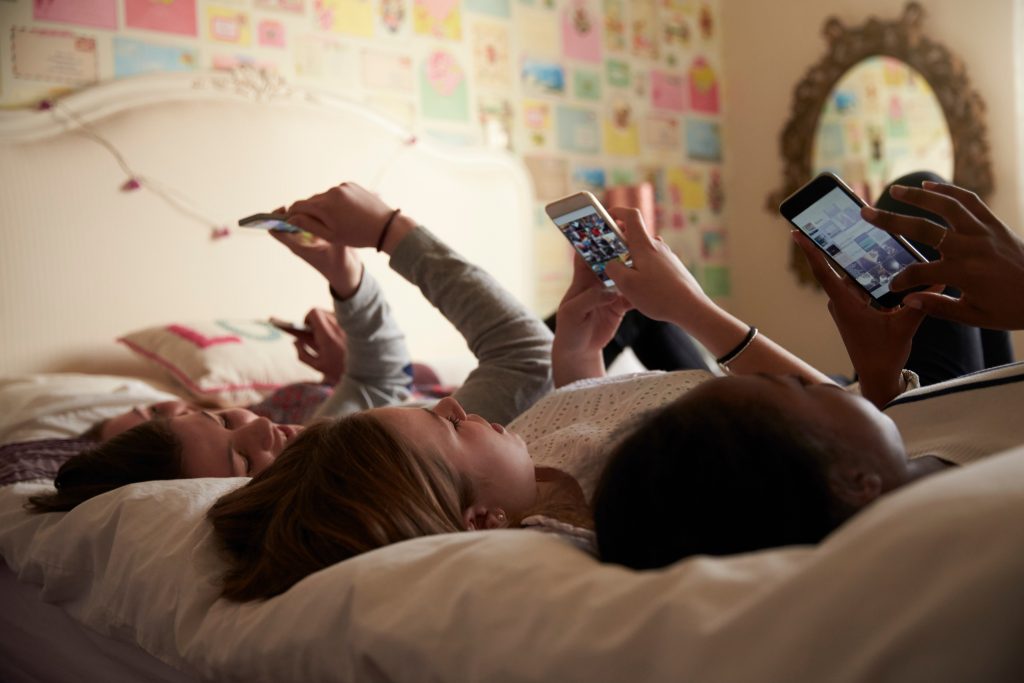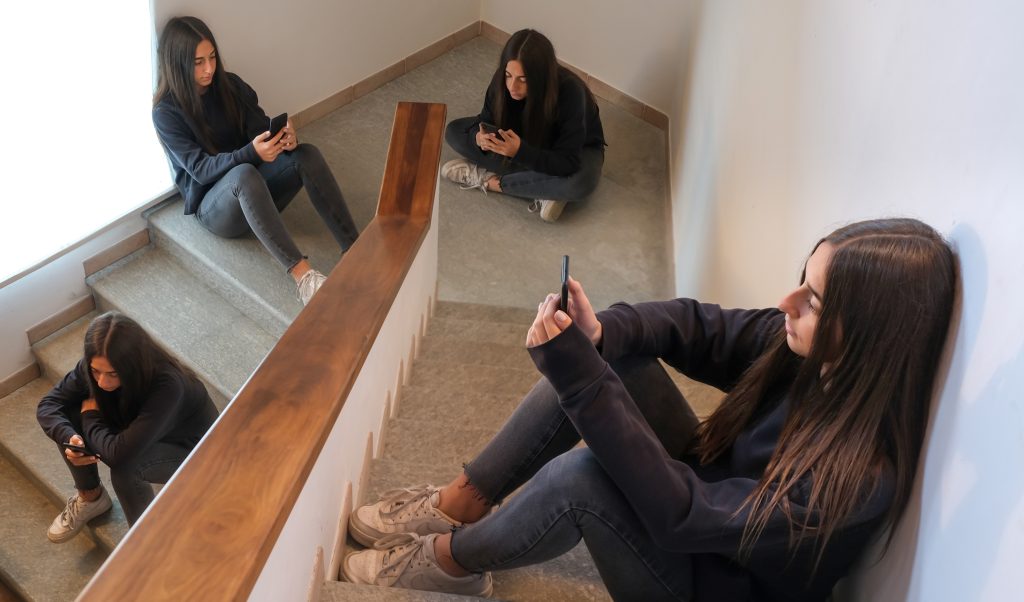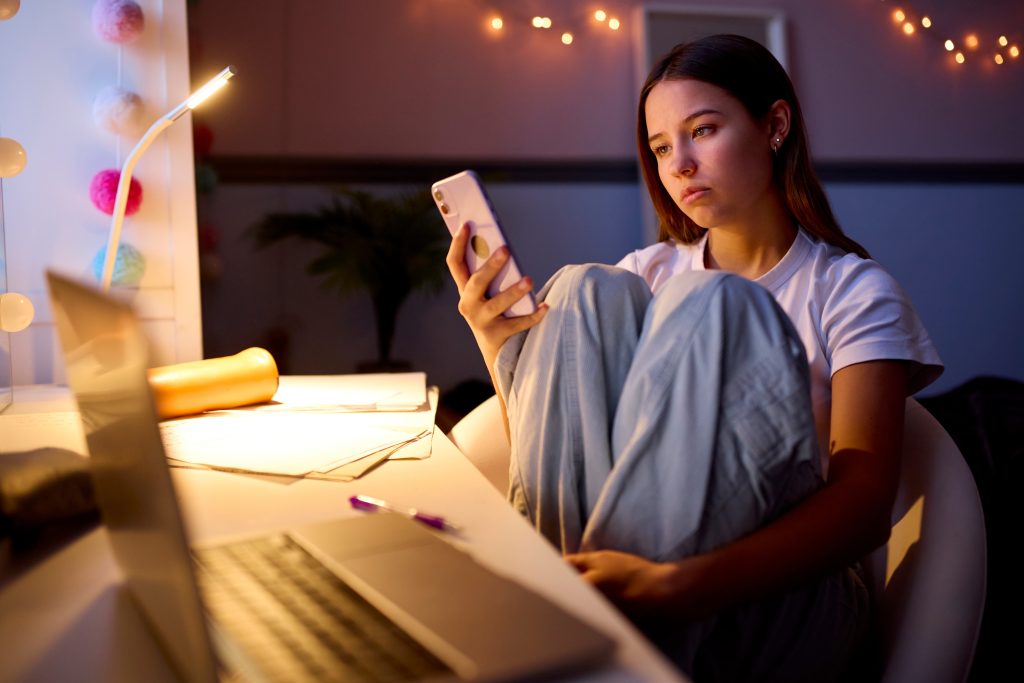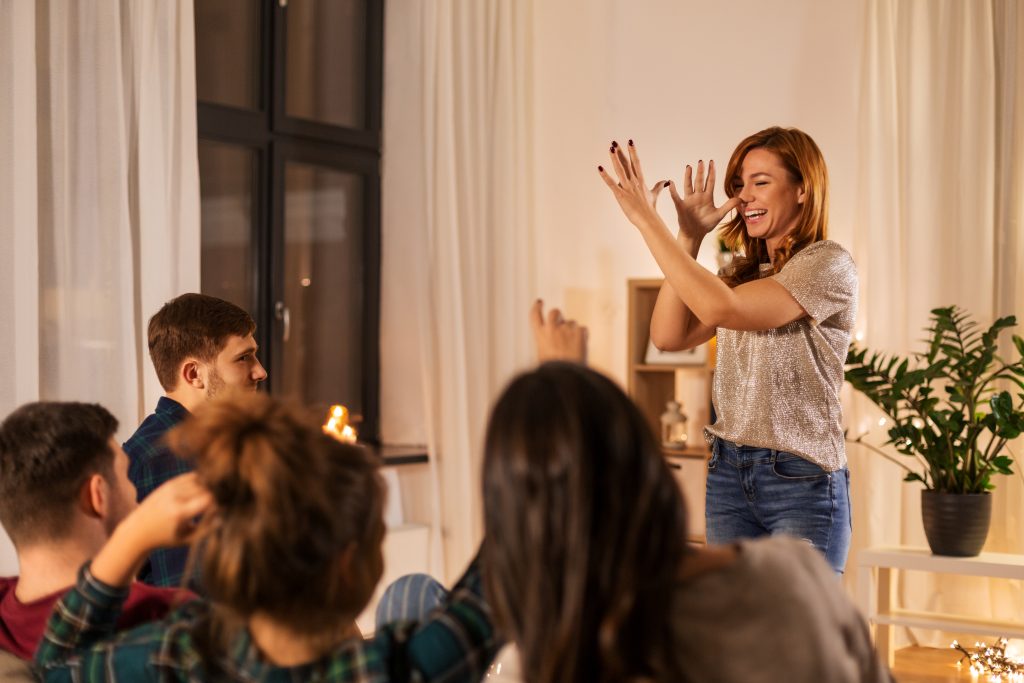The digital age is reshaping how young people connect—or disconnect—from one another
By Siti Salihah

For some, scrolling through Instagram or joining online communities can feel like a lifeline. But for others, it’s a fast track to comparison and superficial connections that leave a deeper void. The way we use these tools—and how much we rely on them—can shape how we feel about ourselves and the world around us.
In continuation of our conversation with psychologist Dr. Lavanya Pillai, we turn our focus to the role of social media and how people are navigating their way through an increasingly digital world. With her empathy and depth, Dr. Lavanya breaks down the nature of social media, offering practical strategies for young people to build more meaningful connections and adapt to the world around them—without losing themselves in the process.

1Twenty80: Can social media platforms and digital communication tools help reduce loneliness, or do they actually contribute to it?
Lavanya Pillai: Social media and digital communication tools are a double-edged sword when it comes to loneliness. They can be a lifeline for some, but a source of isolation for others. It’s all about how they’re used. Here’s a look at both sides:
How Social Media CAN Help:
- Staying Connected: Social media can help people stay in touch with friends and family, especially those who live far away. It’s like having a window into their lives, even if you can’t be there in person.
- Finding Communities: Social media can help people connect with others who share their interests, hobbies, or experiences. It’s like finding a tribe of people who understand you, even if you’ve never met them in person.
- Sharing Experiences: Social media can help people share their thoughts, feelings, and experiences with others. It can be a way to express themselves and feel heard, even if they’re struggling with loneliness.
- Accessing Support: Social media can be a source of support for people who are struggling with mental health issues. There are many online communities and resources that offer advice, encouragement, and a sense of belonging.
How Social Media CAN Contribute to Loneliness:
- Comparison and Competition: Social media can create a sense of comparison and competition. It’s like everyone’s showing off their perfect lives, making it easy to feel inadequate or envious. This can lead to feelings of isolation and inadequacy.
- FOMO (Fear of Missing Out): Social media can create a constant sense of urgency and anxiety. It’s like everyone’s always doing something exciting, and you’re missing out. This can lead to feelings of restlessness and dissatisfaction, making it harder to enjoy the present moment.
- Superficial Connections: Social media can make it easy to have a lot of ‘friends’ online, but these connections might not be as meaningful as real-life relationships. It’s like they’re just fleeting interactions, not true connections.
- Cyberbullying and Harassment: Social media can be a breeding ground for cyberbullying and harassment. This can be incredibly damaging to a person’s self-esteem and can make them feel isolated and afraid to connect with others online.
So, it’s a mixed bag. Social media can be a tool for connection, but it can also contribute to loneliness. It’s important to be mindful of how you use these platforms and to prioritize real-life connections. It’s about finding a healthy balance, using social media to enhance your life, not to define it.

1Twenty80: What are some coping strategies that young people can adopt to overcome feelings of loneliness, especially if they are not comfortable seeking therapy?
Lavanya Pillai: It’s a tough situation, but there are things they can do to feel more connected and supported. Here are some coping strategies that young people can adopt:
- Reach Out to Someone You Trust: It might feel scary, but talking to someone you trust, like a friend, family member, or teacher, can make a big difference. Just sharing your feelings can help you feel less alone. It’s like lifting a weight off your shoulders.
- Join a Club or Group: Find a group that shares your interests, whether it’s a sports team, a book club, a volunteer organization, or a gaming group. It’s a great way to meet new people and build connections. It’s like finding your tribe, a group of people who get you.
- Volunteer Your Time: Helping others is a great way to feel more connected and purposeful. It can boost your self-esteem and give you a sense of belonging. It’s like giving back to the community and making a difference.
- Engage in Activities You Enjoy: Spend time doing things that make you happy, whether it’s playing music, reading, painting, or going for walks. It’s a way to focus on your own well-being and to feel more connected to yourself. It’s like taking care of your inner self, which can help you feel more connected to the world around you.
- Practice Mindfulness: Mindfulness helps you focus on the present moment and to appreciate the little things. It can help you feel more grounded and connected to yourself. It’s like taking a break from the constant noise and finding peace within yourself.
- Limit Screen Time: It’s important to take breaks from social media and digital devices. Spend time in nature, connect with people in person, and engage in activities that don’t involve screens. It’s like giving yourself a digital detox, allowing you to reconnect with the real world.

1Twenty80: What are some ways young people can cultivate a balance between online connections and in-person relationships to combat feelings of isolation?
Lavanya Pillai: It’s about finding that sweet spot, that balance between the online world and the real world. It’s like navigating a tightrope, making sure you’re not leaning too far in either direction.
- Set Boundaries: Limit your screen time and make sure you’re not spending all your time online. Schedule time for in-person activities, like hanging out with friends, playing sports, or volunteering. It’s like creating a healthy routine that allows you to enjoy both worlds.
- Prioritize Real-Life Connections: Make an effort to connect with people in person, even if it’s just for a quick coffee or a walk in the park. Remember that real-life relationships are more meaningful and fulfilling than online interactions. It’s like investing in the relationships that matter most.
- Be Mindful of Your Online Habits: Pay attention to how social media makes you feel. If you find yourself comparing yourself to others, feeling anxious, or spending too much time scrolling, it’s time to take a break. It’s like listening to your inner voice and taking care of your mental well-being.
- Use Social Media for Good: Use social media to connect with friends and family, to join groups that share your interests, or to find support for your mental health. It’s like using social media as a tool for connection and growth, not just for entertainment.
- Engage in Activities That Bring You Joy: Spend time doing things that make you happy, whether it’s playing music, reading, painting, or going for walks. It’s a way to focus on your own well-being and to feel more connected to yourself. It’s like finding your passions and nurturing your soul.
There’s no right or wrong answer. It’s about being mindful of how you use social media and prioritizing real-life connections. It’s like finding a way to live in both worlds, enjoying the best of both without losing yourself in either one.
In the next article of our Loneliness Across Generations series, we’ll shift the focus to the essential role of families, schools, and communities in providing the support young people need to build stronger, more meaningful connections.












